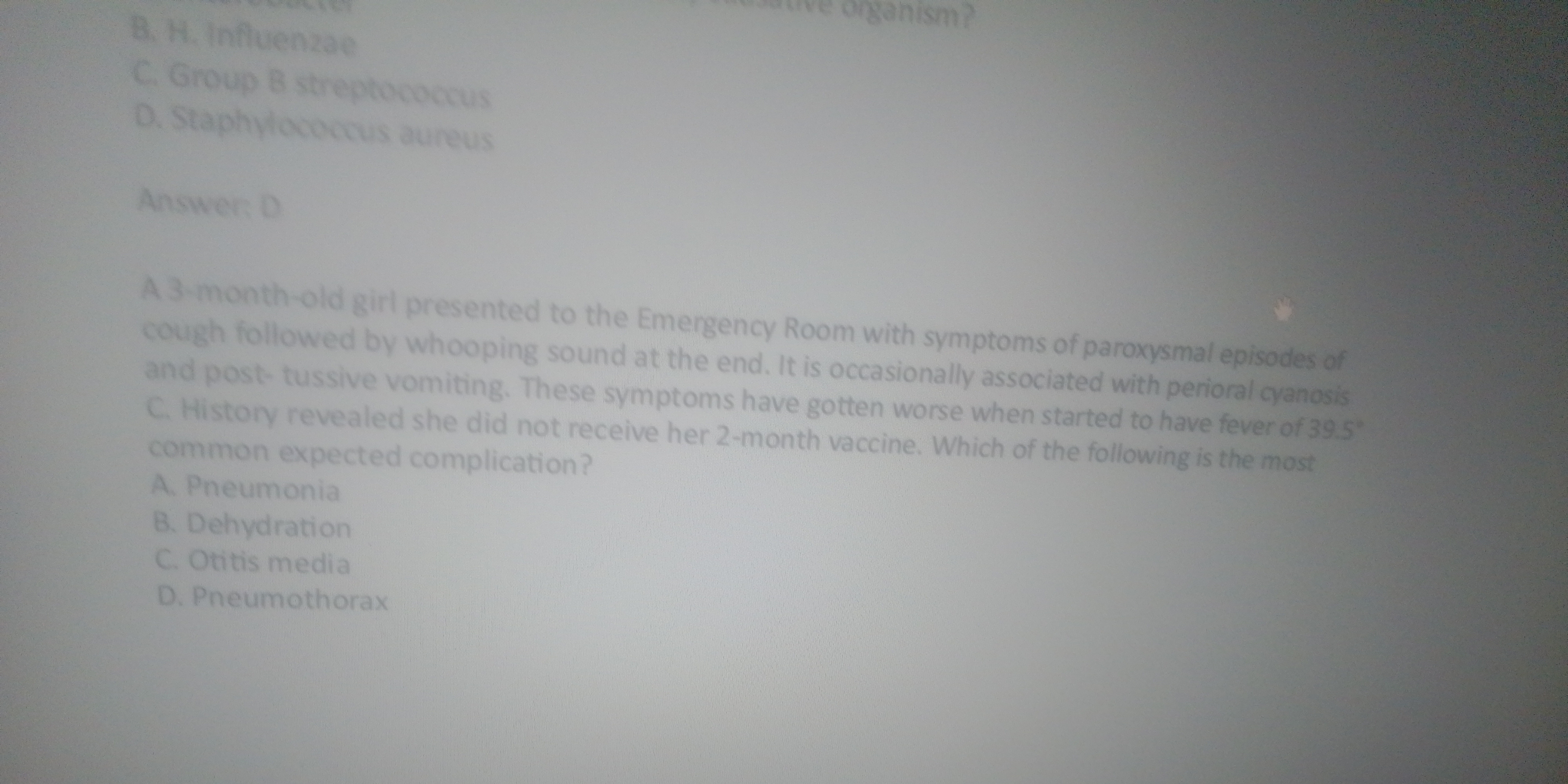A 3-month-old girl presented to the Emergency Room with symptoms of paroxysmal episodes of cough followed by a whooping sound at the end. It is occasionally associated with periora... A 3-month-old girl presented to the Emergency Room with symptoms of paroxysmal episodes of cough followed by a whooping sound at the end. It is occasionally associated with perioral cyanosis and post-tussive vomiting. These symptoms have gotten worse when started to have a fever of 39.5 degrees Celsius. History revealed she did not receive her 2-month vaccine. Which of the following is the most common expected complication?

Understand the Problem
The question describes a 3-month-old girl presenting with symptoms suggestive of pertussis (whooping cough), complicated by fever and lack of vaccination. The question asks us to identify the most common expected complication in such a case.
Answer
The most common expected complication is Pneumonia.
The most common expected complication of pertussis is Pneumonia, so the answer is A
Answer for screen readers
The most common expected complication of pertussis is Pneumonia, so the answer is A
More Information
The clinical vignette describes a 3-month-old with signs and symptoms suggestive of pertussis (whooping cough). The classic presentation includes paroxysmal cough followed by a whooping sound, and the patient's lack of vaccination further supports this diagnosis. Infants are particularly vulnerable to complications from pertussis, with pneumonia being the most common.
Tips
A common mistake is confusing the less common complications with the more prevalent ones. Always consider the most frequent complications first.
Sources
- Clinical Features of Pertussis - CDC - cdc.gov
- Symptoms of Whooping Cough - CDC - cdc.gov
AI-generated content may contain errors. Please verify critical information